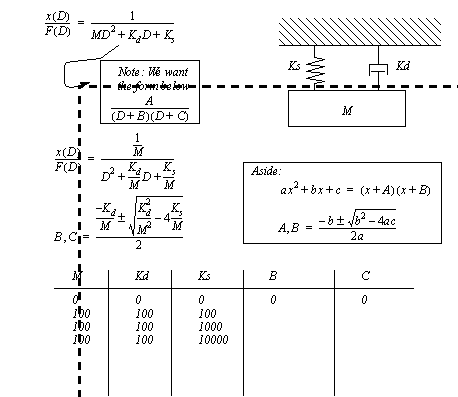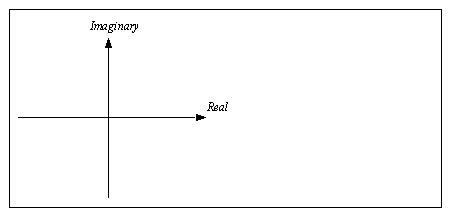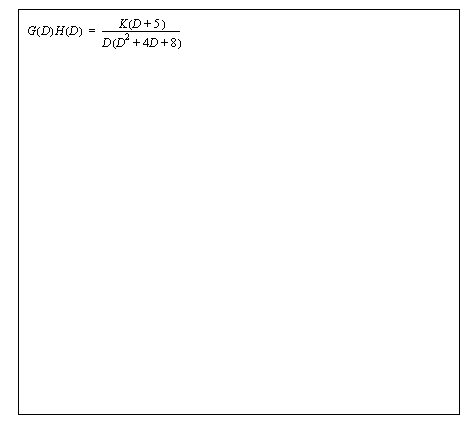ROOT-LOCUS ANALYSISIn a engineered system we may typically have one or more design parameters, adjustments, or user settings. It is important to determine if any of these will make the system unstable. This is generally undesirable and possibly unsafe. For example, think of a washing machine that vibrates so much that it ‘walks’ across a floor, or a high speed aircraft that fails due to resonant vibrations. Root-locus plots are used to plot the system roots over the range of a variable to determine if the system will become unstable, or oscillate. Recall the general solution to a homogeneous differential equation. Complex roots will result in a sinusoidal oscillation. If the roots are real the result will be e-to-the-t terms. If the real roots are negative then the terms will tend to decay to zero and be stable, while positive roots will result in terms that grow exponentially and become unstable. Consider the roots of a second-order homogeneous differential equation, as shown in Figure 11.1 Negative real roots make a system stable to Figure 11.7 Complex roots with positive real parts have growing oscillations and are unstable. These roots are shown on the complex planes on the left, and a time response is shown to the right. Notice that in these figures (negative real) roots on the left hand side of the complex plane cause the response to decrease while roots on the right hand side cause it to increase. The rule is that any roots on the right hand side of the plane make a system unstable. Also note that the complex roots cause some amount of oscillation. 
Figure 11.1 Negative real roots make a system stable 
Figure 11.2 Complex roots make a system oscillate 
Figure 11.3 Negative real and complex roots cause decaying oscillation 
Figure 11.4 More negative real and complex roots cause a faster decaying oscillation 
Figure 11.5 Overlapped roots are possible 
Figure 11.6 Positive real roots cause exponential growth and are unstable 
Figure 11.7 Complex roots with positive real parts have growing oscillations and are unstable Next, recall that the denominator of a transfer function is the homogeneous equation. By analyzing the function in the denominator of a transfer function the general system response can be found. An example of root-locus analysis for a mass-spring-damper system is given in Figure 11.8 A mass-spring-damper system equation. In this example the transfer function is found and the roots of the equation are written with the quadratic equation. At this point there are three unspecified values that can be manipulated to change the roots. The mass and damper values are fixed, and the spring value will be varied. The range of values for the spring coefficient should be determined by practical and design limitations. For example, the spring coefficient should not be zero or negative. 
Figure 11.8 A mass-spring-damper system equation The roots of the equation can then be plotted to provide a root locus diagram. These will show how the values of the roots change as the design parameter is varied. If any of these roots pass into the right hand plane we will know that the system is unstable. In addition complex roots will indicate oscillation. 
Figure 11.9 Drill problem: Plot the calculated roots on the axes above A feedback controller with a variable control function gain is shown in Figure 11.10 Root-locus analysis in controller design. The variable gain ’K’ necessitates the evaluation of controller stability over the range of operating values. This analysis begins by developing a transfer function for the overall system. The root of the denominator is then calculated and plotted for a range of ’K’ values. In this case all of the roots are on the left side of the plane, so the system is stable and doesn’t oscillate. Keep in mind that gain values near zero put the control system close to the right hand plane. In real terms this will mean that the controller becomes unresponsive, and the system can go where it pleases. It would be advisable to keep the system gain greater than zero to avoid this region. 
Figure 11.10 Root-locus analysis in controller design 
Figure 11.11 Root-locus plotting in Scilab 
Figure 11.12 Drill problem: Complete the root-locus analysis 
|